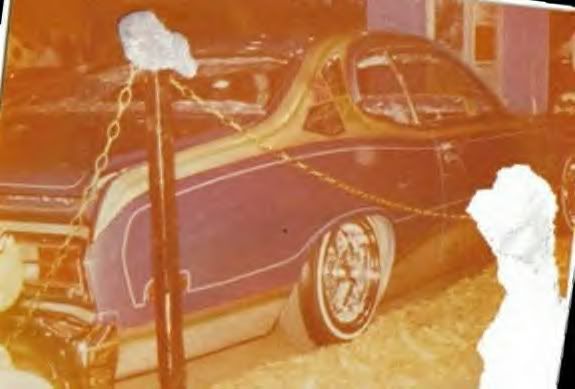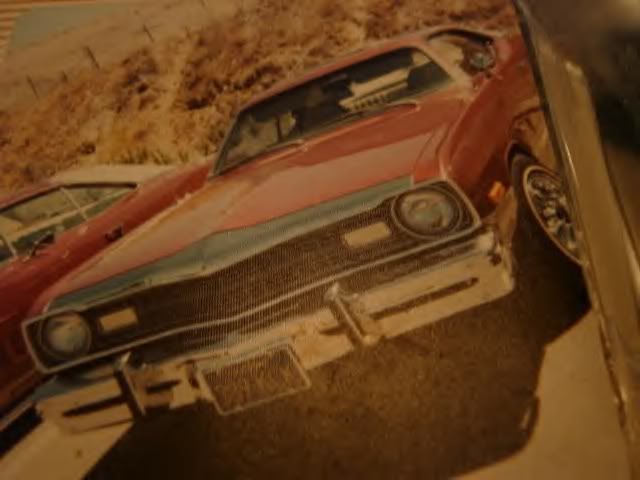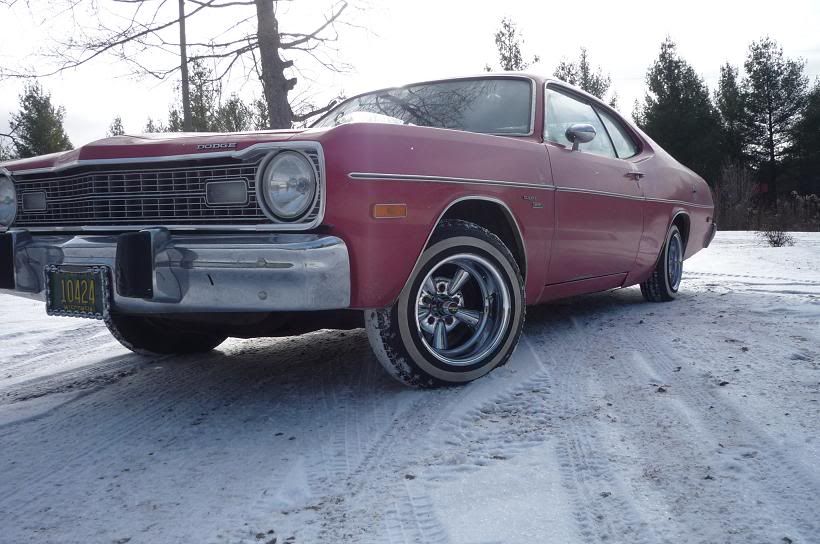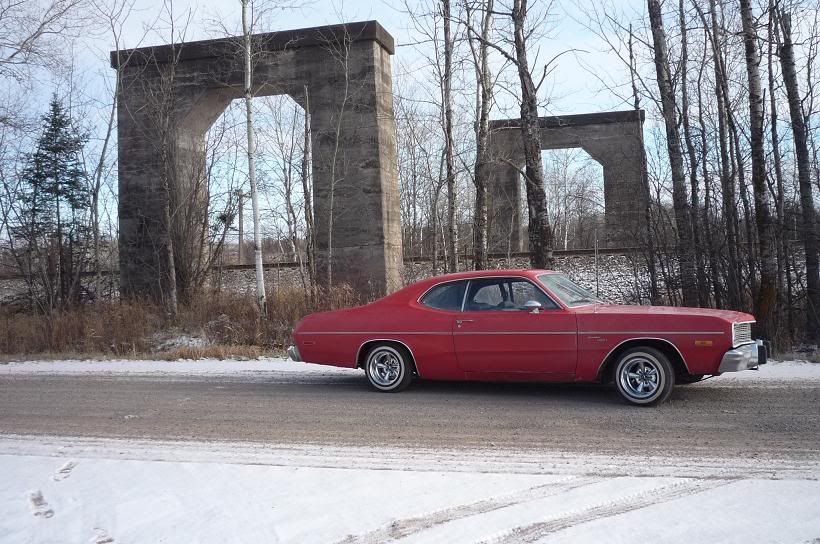Street Racing in New York City
Photos
Slideshow
 (Enlarge photo)
(Enlarge photo)
Although the battlewagon of choice was a current muscle car, on any given night you'd see all kinds of stuff going at it. (Photo b y Joe Oldham, Contributor)
 (Enlarge photo)
(Enlarge photo)
Two big-block Corvettes square off on the service road of the Southern State Parkway near the Huntington-Route 110 exit. After the usual spots were shut down by the cops, New York street racers looked for new places to do battle. (Photo by Joe Oldham, Contributor)
 (Enlarge photo)
(Enlarge photo)
Poseurs frequently buzzed through "the pits" on Union Turnpike. (Photo by Joe Oldham, Contributor)
 (Enlarge photo)
(Enlarge photo)
This sign led to the greatest street racing in the world the Connecting Highway in Queens, New York. (Photo by Joe Oldham, Contributor)
 (Enlarge photo)
(Enlarge photo)
Talking trash was part of the deal in the pits. Here on Union Turnpike, guys talked big, made the deal, then went up onto the Clearview Expressway to settle it. (Photo by Joe Oldham, Contributor)
 (Enlarge photo)
(Enlarge photo)
Guys parked on Union Turnpike under the Clearview Expressway. This was "the pits" for Clearview Expressway street racing. (Photo by Joe Oldham, Contributor)
 (Enlarge photo)
(Enlarge photo)
At one point in 1968, street racing was so prevalent and the money so big that semi-"organizers" actually set up major "meets" and advertised them via flyers passed out at drive-ins and stuck to telephone poles throughout the NYC area. (Photo by Joe Oldham, Contributor)
 (Enlarge photo)
(Enlarge photo)
Most guys would never open their hoods, admitting only to "running a V8." Others, especially preening owners of the newest and hottest muscle cars, were more liberal, showing off with pride. (Photo by Joe Oldham, Contributor)
The way it was when they took it to the street
 Print this
Print this Save this this!
Save this this! Email this
Email this<A href="http://www.edmunds.com/insideline/do/Features/articleId=120680#" target=_blank>
Most popularhttp://del.icio.us/post
They say the first street race between cars occurred the day the second car was built. I think there's a lot of truth to that old tale. Who of you hasn't gunned it to beat out the guy next to you at a green light at least once in your life? Some of you probably more than once if you're reading this book. It's a rite of passage that has been going on for eons.
Today, they make movies about street racing. "The Fast and the Furious" is essentially about import tuner cars street racing in Los Angeles. There have been many others over the years.
Yet, no one ever spoke about street racing out loud. Not in the muscle car era of the '60s.
So when I wrote the first article ever published on street racing, in the August 1968 issue of
Cars Magazine, it was shocking,
shocking, to thousands all over the country.
One of the people shocked out of their gourd was Wally Parks in Los Angeles. Parks, a former editor of
Hot Rod magazine, was now the founder and president of the National Hot Rod Association. Parks always claimed that one of the reasons NHRA was founded was to get the racing off20the streets of Los Angeles. Parks called me the day the issue hit newsstands.
"Joe, how could you write such an article? Why would you glorify street racing like that? You've just undone about 25 years' worth of hard work on the part of NHRA and hundreds of us all over this country," Parks said.
I did? Me? All by myself?
He went on like that for another 15 minutes. I didn't want to get into a long, argumentative, disrespectful phone discussion with Wally Parks, a guy who was almost godlike and still is to millions of people in this country. Out of respect, I just said I was sorry he felt that way about the article and that I was only reporting what I saw.
The fact was that NHRA had long ago become a big entertainment business, collecting huge television fees and gate receipts at tracks all over the USA and had little to do with the grassroots safety movement that had been at the core of the organization's founding. The proof of that was the continuing, growing, street racing movement that was an integral part of the whole muscle car era and, in fact, continues today with the import tuner guys.
It was a national thing. In the Los Angeles area where street racing may have originated in the first place, you could find a run on Colorado Boulevard in Pasadena and Van Nuys Boulevard in L.A. Detroit had its famed Woodward Avenue but guys also raced out on I-75, I-94 and in Livonia.
In the '60s in the New York a rea where I grew up, there were numerous places you could go street racing on any given night of the week. Something was always happening on Cross Bay Boulevard, Connecting Highway and Nassau Expressway, all in the borough of Queens. In Brooklyn, street racers gathered in the parking lot of Mitchell's hamburger joint on 7th Avenue in Brooklyn, then went out under the Brooklyn-Queens Expressway, or to Second Avenue to settle it. The Bronx had its White Castle on Boston Post Road or the Adventurer's drive in. There were similar spots all over the country. At various times over the years, I flew in to most of the spots in most cities. But no place, no place, could touch the Connecting Highway.
The Connecting Highway. In New York in the '60s, this is where it was at in terms of big time street racing. The Connecting Highway is actually a short stretch of roadway that connects the Brooklyn-Queens Expressway to the Grand Central Parkway in Queens, New York. All the big money runs took place at the Connecting, as we called it.
All the real street racers knew this and so did the cops. In addition to holding the record for most street drag races in one night, the Connecting Highway also held the record for the place where the most tickets in any one night were given out and also the record for most arrests of street racers in any one place.
In fact, Fred Mackerodt, managing editor and later editor in chief of
Cars magazine, was arrested at the Connecting Highway one night while spectating. He wanted to see the spectacle with his own eyes. He didn't believe it.
Even with all the police hassles, on a good night, you couldn't beat the Connecting for good racing. One of the reasons it was so good is that it was all packed into one little quarter-mile, from one underpass to the other. You could see everything. Granted, it was easier for the cops to see, too. But if you wanted to street race, it was done right at the Connecting.
I used to go there regularly to watch and to hear the stories. Got a lot of good article ideas there and you would not believe some of the stories. Like the time they towed in a Double A/Fuel Dragster up there, rolled it off the trailer, fired it up, smoked the whole length of the highway, then popped the chute as it went under the second underpass.
Right there on a public highway! It was a common sight to see '55 Chevys and Willys gassers being towed into the pits at the Connecting.
The "pits" were the two elevated service roads that flank each side of the highway itself. I saw outlandish things there like transmissions being changed, slicks mounted and shifters adjusted. Tuneups were common and didn't even rate a second look, while a transmission or rear end change usually gathered a crowd, because to change a transmission or rear right out on a public street was a class move.
Spectators looked down onto the highway from the two guard rails that ran along the elevated service ro ads. The rails kept cars, girls and other debris from falling down onto the highway. It was common to see a bunch of guys standing on the sidewalk along the pits only to be interrupted by the screech of burning slicks and open headers bellowing up from the highway. A run! Everyone immediately ran to the rails to look down at the action taking place on the highway below.
There were always some drive-in
poseurs making burnouts in the pits. But this was frowned on by the real racers because it attracted the cops and gave the cops a reckless driving excuse to bust everybody.
A lot of guys used to bring their chicks to the Connecting Highway to watch the races and make out between runs. And there was always a plethora of babes there on their own, looking to pick up guys. This was something the serious racers had to put up with. With so many people around making out, watching and cluttering the pits, it made it a hassle to work on your car. But it was a happening.
At one point, because of the popularity of the Connecting Highway with non-serious racers, the 114th Precinct of the New York City Police Department staged a drive to shut down the Connecting once and for all. The real racers moved to other less intense street racing venues, returning to the Connecting only for the most serious of money runs well after midnight. By that time of night, the hokey people had left and there was money to be made.
Before midnight on any given night, the l ess formal venues thrived. Sounds from the Clearview Expressway near Union Turnpike were a clear indication that this was where the action was on that night. At Clearview, the scene was a little different. The area under the bridge where the expressway passed over Union Turnpike served as the pits. The runs took place up on the Expressway itself. Runs went from Union Turnpike to the next exit.
If you passed the White Castle at Parsons Boulevard and it was empty, you knew you had hit a good night for racing at the Clearview Expressway up ahead. And when you pulled up to the bridge, if you saw two cars making a left under the sign that said "Throgs Neck Bridge," you knew you had gotten there just in time to see a run.
It was harder to watch runs at the Clearview because you had to follow the racers in a car to see what happened. There really was no viewing area, as there was at the Connecting. This was good for money racing because the cops weren't around constantly to clear out the spectators. There were no spectators.
There was one spot out in Queens that was the granddaddy of all street racing venues, save for perhaps a few blocks in downtown Los Angeles Cross Bay Boulevard. Today, Cross Bay is totally developed with strip malls and tract housing running its entire length from Southern State Parkway all the way to Rockaway Beach. In those days, Cross Bay was a deserted strip of highway with nothing but marshland stretching for miles on each side=2 0of the roadway and a legend.
Trouble was it got so big and so popular that the cops just shut it down. By the end of the '60s, no one raced there anymore. Oh, you'd see some dumb clams throwing powershifts around the Bay and hanging out in the pits just past the first bridge. And there was always some goon doing a burnout out of the Pizza City parking lot. But by 1970, the cops had shut down Cross Bay and it was never again to be the scene of intense street racing, as it was in the late '50s and '60s.
Then, the pits were packed every night and the racing was just about nonstop, the parking lots of Pizza City and the Big Bow-Wow packed with guys on the prowl. By the late '60s, you couldn't even breathe loud on Cross Bay without getting a ticket. The racers even staged a protest one night, complete with posters, signs and hundreds of cars slowly going the speed limit up and down Cross Bay, protesting the harsh treatment and "police brutality" being meted out to street racers.
Every so often in New York City, there was a crash and some guy died street racing his muscle car. Naturally, the
New York Daily News and
New York Post covered the incident in detail, with close-up shots of the crushed GTO or the splintered fiberglass remains of a Corvette. Then the politicos would decry the state of today's youth and call for harsher police crackdowns on the street racers who were threatening the life and security of all the good citizens of New York City.
But a few weeks later, I'd be back at the Connecting Highway and, inevitably, some guy would pull into the pits in a jacked-up Goat or a Hemi Road runner, roll down the window and say something like "I'll run anybody here for any amount."
And Wally Parks got mad at me.
Disclaimer
Muscle Car Confidential: Confessions of a Muscle Car Test Driver


























